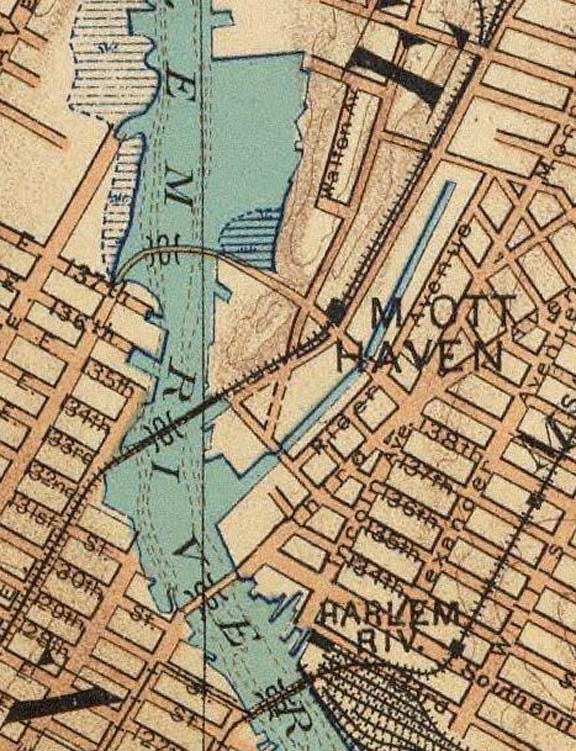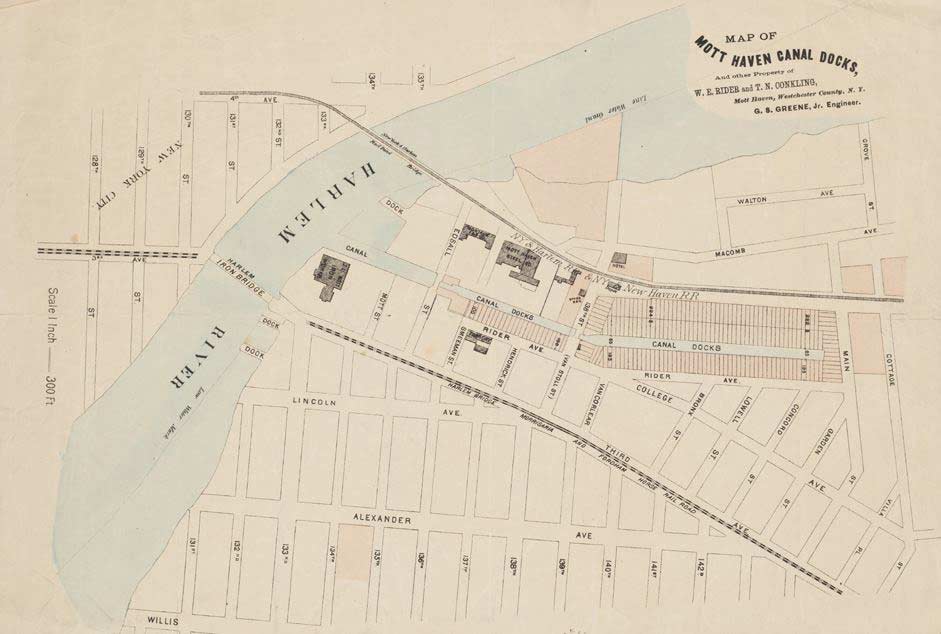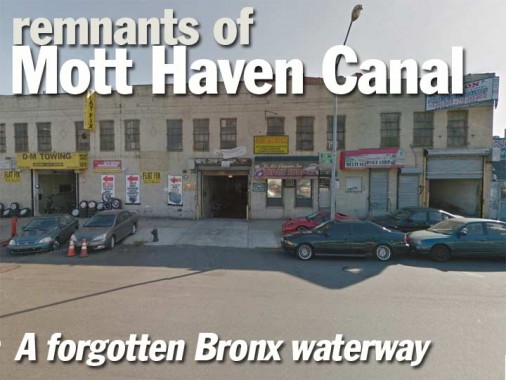By SERGEY KADINSKY
Forgotten New York correspondent
A nondescript row of auto repair shops located on East 138th Street stands on the former site of a South Bronx ship canal that was in operation until about 1905. Let Sergey take it from here…

You won’t find any Asian cuisine here, but as with Canal Street in Manhattan, Canal Street in the South Bronx and its parallel, Canal Place , serve as reminders of a waterway long buried beneath the industrial properties of the neighborhood. Proposed in 1850 by Mott Haven founder Jordan L. Mott, it was carved out in the early 1870s. This man-made inlet of the Harlem River penetrated as far north as 144th Street. Along its shoreline, cranes picked up freight from barges and loaded the goods into warehouses.

Mott Haven Canal was located just west of today’s Rider Avenue (named for William T. Rider who, with business partner Theodore Conkling, purchased 600 lots in Mott Haven from Jordan Mott and competed the construction of Mott Haven Canal). The canal stretched as far north as today’s East 144th Street at its furthest extent.
Two bascule bridges spanned the relatively narrow canal with lock-like tide gates underneath to keep out high tides. In contrast to Gowanus Canal, which was originally a natural stream and has water pumped from East River to maintain a steady flow, the Mott Haven Canal did not have a current and its standing water quickly gained a reputation for its odor.
A stub of the canal remained below 138th Street into the 1930s, and after WWII, truncated further to 135th Street where it was used as a barge transfer by the Central Railroad of New Jersey’s railyard. That section was filled in in 1964 for a truck depot. Other than a slight indentation in the Harlem River only Canal Street and Canal Place remain as reminders of the canal’s former existence.
During its short life, Mott Haven Canal attracted two local impressionists, Charles Frederick William Mielatz (1860-1919), and Margaretha E. Albers (1881-1977), who preserved it for posterity in their art. Mielatz’s drawings of the canal can be found at the Museum of the City of New York and Cornell University’s Herbert F. Johnson Museum of Art. Albers’ painting of the canal was sold in 2012 for $1,126.
Between 1901 and 1913, the city’s photographers also documented the canal, their works now part of the Municipal Archives. Traveling along the former waterway on Canal Place, no trace of the canal can be found but there is still a very visible ad for a rug cleaner that was last spotted by Kevin Walsh back in 2009.
Canal Place at East 135th Street
With recent talk of gentrification crossing the Harlem River into the South Bronx, now is the time to visit Canal Place before it becomes another row of boring glass box condos. Nearly every property along Canal Place and Canal Place West has “For Sale” signs,” as speculators seek to cash in.
Sergey Kadinsky’s new book, Hidden Waters of New York City, is now available for pre-order.
12/25/15
